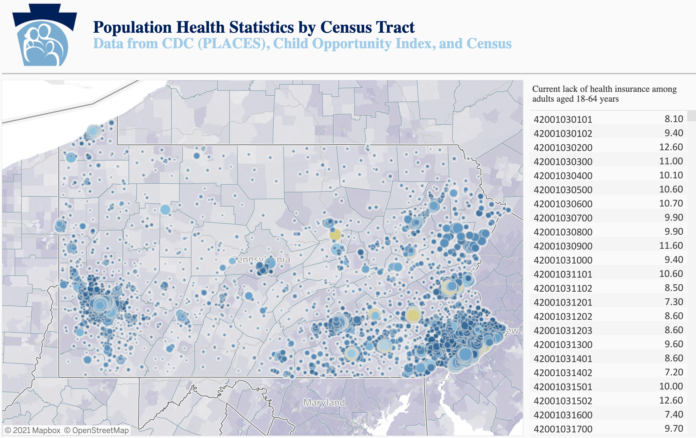by Cassie Miller
A new tool launched by the Pennsylvania Department of Human Services can help providers and community organizations identify and address health inequities, state health experts say.
The tool, an interactive data dashboard known as PA HEAT or the Pennsylvania Health Equity Analysis Tool, aims to give providers, community organizations and the public the opportunity to address health equity concerns in their communities.
PA HEAT, created as part of Gov. Tom Wolf’s health equity initiatives announced last fall, provides state, county, zip code, and census tract-level data on a dashboard accessible on the Human Services Department’s website.
Data on food insecurity, Medicaid enrollment, health statistics, social determinants, environmental factors and historic redlining are all available to view on PA HEAT.
“You can really get a granular look at these areas across the commonwealth,” Dr. Doug Jacobs, DHS’ Chief Medical Officer and Chief Innovation Officer, said.
The dashboard logs such county level data as infant mortality rates, life expectancy and screening rates, but can get as specific as banking options, nursing facilities and childcare providers available in a selected zip code.
“The purpose of all of this is really to empower communities,” Jacobs said. “It can be helpful in telling the stories of our communities.”
Jacobs, a practicing physician, said the dashboard makes the data “accessible and transparent for folks” who do not see health equity issues in their day-to-day interactions.
“As a practicing internal medicine physician, I have seen first-hand how affordability and a whole-person approach to health care is so crucial to promoting equity and helping people access the health care they deserve,” Jacobs said.
Speaking to reporters on Wednesday, DHS officials said the agency began development on the dashboard last fall, during the COVID-19 pandemic, with existing staff and resources.
Despite the pandemic drawing more attention to the issue of health equity, Jacobs acknowledged that the disparities in health equity “existed long before the pandemic.”
“The pandemic highlighted the inequities,” Jacobs told the Capital-Star, urging community leaders and providers to utilize the dashboard.
“There’s a huge amount of stakeholders that could really benefit [from the tool],” Jacobs said. “It’s going to take all of us to make a dent in these health inequities.
Cassie Miller is a reporter for the Pennsylvania Capital-Star, where this article first appeared.
